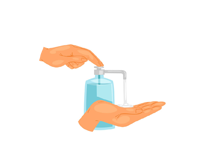Doripenem
Uses of Doripenem
- Treats complex urinary tract infections (UTIs)
- Effective in treating pneumonia and respiratory tract infections
- Used for intra-abdominal infections
- Helps treat complicated skin and soft tissue infections
How Doripenem Works
Doripenem works by inhibiting bacterial cell wall synthesis, ultimately leading to the destruction of the bacteria. It is a broad-spectrum antibiotic that is effective against both Gram-positive and Gram-negative bacteria. This antibiotic is particularly useful for treating infections caused by multi-drug-resistant bacteria, which other antibiotics may not be effective against.
Benefits of Doripenem
- Highly effective against a wide range of bacterial infections
- Used for treating severe and complicated infections that may not respond to other antibiotics
- Offers a potent solution for multidrug-resistant bacterial infections
- Administered intravenously, ensuring fast and direct delivery for serious infections
How to Take Doripenem
Doripenem is usually administered intravenously (IV) in a hospital or healthcare setting. The dosage and duration of treatment depend on the type and severity of the infection being treated, as well as the patient`s health condition. Typically, the drug is given over a period of 1 hour every 8 hours. Always follow the dosage instructions provided by your healthcare provider and do not attempt to administer the medication on your own.
Type of Dosage Available
- Intravenous (IV) infusion
Side Effects of Doripenem
- Gastrointestinal disturbances such as nausea, vomiting, and diarrhea
- Headache or dizziness
- Rashes or skin irritation
- Potential allergic reactions (difficulty breathing, swelling of the face or throat)
- Severe kidney problems (rare)
Safety Advice
- Inform your doctor if you have a history of kidney problems or allergies
- Use with caution if you are pregnant or breastfeeding
- Complete the full course of treatment to prevent antibiotic resistance
- Ensure hydration and adequate kidney function during treatment
Frequently Asked Questions (FAQs)
Q: What is Doripenem used for?
A: Doripenem is used to treat serious bacterial infections such as urinary tract infections, pneumonia, intra-abdominal infections, and skin infections.
Q: How is Doripenem administered?
A: Doripenem is administered intravenously (IV) in a hospital or healthcare setting. The dosage and frequency are determined by your doctor based on the infection.
Q: Are there any side effects of Doripenem?
A: Common side effects include gastrointestinal upset, headache, and skin rash. Rare but serious side effects may include allergic reactions or kidney problems.
Q: Can Doripenem be taken with other antibiotics?
A: Consult your healthcare provider before combining Doripenem with other antibiotics to ensure safety and avoid interactions.
Q: Is Doripenem safe during pregnancy?
A: Pregnant women should consult their doctor before using Doripenem to assess the potential risks and benefits.
Medicine Not Available for Doripenem
Uses of Doripenem
- Treats complex urinary tract infections (UTIs)
- Effective in treating pneumonia and respiratory tract infections
- Used for intra-abdominal infections
- Helps treat complicated skin and soft tissue infections
How Doripenem Works
Doripenem works by inhibiting bacterial cell wall synthesis, ultimately leading to the destruction of the bacteria. It is a broad-spectrum antibiotic that is effective against both Gram-positive and Gram-negative bacteria. This antibiotic is particularly useful for treating infections caused by multi-drug-resistant bacteria, which other antibiotics may not be effective against.
Benefits of Doripenem
- Highly effective against a wide range of bacterial infections
- Used for treating severe and complicated infections that may not respond to other antibiotics
- Offers a potent solution for multidrug-resistant bacterial infections
- Administered intravenously, ensuring fast and direct delivery for serious infections
How to Take Doripenem
Doripenem is usually administered intravenously (IV) in a hospital or healthcare setting. The dosage and duration of treatment depend on the type and severity of the infection being treated, as well as the patient`s health condition. Typically, the drug is given over a period of 1 hour every 8 hours. Always follow the dosage instructions provided by your healthcare provider and do not attempt to administer the medication on your own.
Type of Dosage Available
- Intravenous (IV) infusion
Side Effects of Doripenem
- Gastrointestinal disturbances such as nausea, vomiting, and diarrhea
- Headache or dizziness
- Rashes or skin irritation
- Potential allergic reactions (difficulty breathing, swelling of the face or throat)
- Severe kidney problems (rare)
Safety Advice
- Inform your doctor if you have a history of kidney problems or allergies
- Use with caution if you are pregnant or breastfeeding
- Complete the full course of treatment to prevent antibiotic resistance
- Ensure hydration and adequate kidney function during treatment
Frequently Asked Questions (FAQs)
Q: What is Doripenem used for?
A: Doripenem is used to treat serious bacterial infections such as urinary tract infections, pneumonia, intra-abdominal infections, and skin infections.
Q: How is Doripenem administered?
A: Doripenem is administered intravenously (IV) in a hospital or healthcare setting. The dosage and frequency are determined by your doctor based on the infection.
Q: Are there any side effects of Doripenem?
A: Common side effects include gastrointestinal upset, headache, and skin rash. Rare but serious side effects may include allergic reactions or kidney problems.
Q: Can Doripenem be taken with other antibiotics?
A: Consult your healthcare provider before combining Doripenem with other antibiotics to ensure safety and avoid interactions.
Q: Is Doripenem safe during pregnancy?
A: Pregnant women should consult their doctor before using Doripenem to assess the potential risks and benefits.
Download India's most affordable pharmacy app
- Compare with medicine prices
- Save upto 90% on your medicine bills

Temperature Controlled storage and delivery

Regular Sanitization

Disinfected Packaging









 Added!
Added!